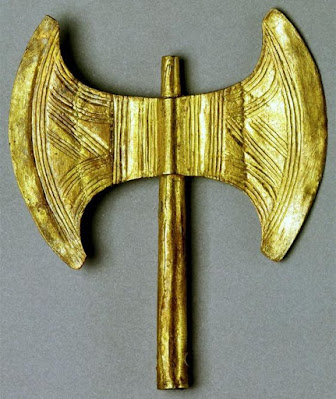For me the most interesting thing of bee is Royal Jelly and it has to be fresh, preserved in the cold chain:
The use of royal jelly comes from ancient times. The first historical records of its consumption date back to ancient Greece; many authors consider that Ambrosia, food of the gods, is actually a direct mention of the consumption of royal jelly (2). Aristotle has since described the effects of royal jelly on the life of the queen bee and the possibility of a similar effect on humans (3). In ancient Egypt, royal jelly had religious connotations and was considered a food for the pharaohs; Likewise, it has been mentioned that Cleopatra used it for aesthetic purposes (4). In ancient China, its medical uses were also described, emphasizing its usefulness for controlling the speed of aging and for sexual dysfunctions. Even today, in traditional Chinese medicine, royal jelly continues to be used in the management of deficiency syndromes. Qi or as a Yang tonic (5).
In the 17th century, René Antoine de Réaumur, a renowned physicist, mathematician and entomologist, officially coined the term royal jelly, taking into account that it is the food of the queen bee (6). Around 1950, its consumption became popular when it was learned that Pope Pius XII included the consumption of royal jelly among his therapies. Later work that has extended over the last two centuries has allowed us to characterize the composition of Royal Jelly and describe its therapeutic properties.
Infections. The lipids contained in royal jelly explain the antibacterial activity against different strains, including methicillin-resistant Staphylococcus aureus, Klebsiella pneumoniae and Pseudomonas aeruginosa, all of which produce community-acquired and nosocomial infections (8). Antiviral activity has also been characterized for royal jelly. In particular, its activity against the herpes simplex-1 virus has been characterized (9). Royal jelly also has activity against Candida sp. being only surpassed in capacity by bee honey (10).
Cancer. In cases of cancer, effects have been found in both prevention and treatment. Regular consumption of royal jelly reduces the risk of contracting different types of cancer, including prostate and breast cancer. When this disease has been established, it has been found that this product has a direct action on tumor cells, destroying them through the induction of the caspase pathway, thus achieving a reduction in the size of the primary tumor and metastasis (11).
Rheumatic diseases. Royal jelly has pharmacological activities on the inflammatory process (immunomodulatory) and on the fibrous transformation of tissues as a result of sustained inflammation, making its use useful and necessary as part of the treatment of chronic rheumatic diseases that present with inflammatory processes such as osteoarthritis, rheumatoid arthritis, scleroderma, psoriasis and lupus. Regarding the inflammatory process, royal jelly reduces the proliferation of T lymphocytes, decreases IL-12 levels, and decreases the production of macrophages (12). At high doses, royal jelly decreases the activity of both TH1 and TH2 lymphocytes (13), which is a desirable effect in the case of autoimmune diseases.
On the other hand, royal jelly decreases histone acetylation processes in synoviocytes and chondrocytes, thus preventing their phenotypic transformation into fibroblasts (14). Likewise, on the chondrocyte, royal jelly prevents its premature death by protecting the telomeres (15). Another of the favorable effects in osteoarthritis is due to its effect on estrogen receptors in the chondrocyte (16), which are involved in the pathogenesis of osteoarthritis (17). Royal jelly also prevents the loss of muscle that occurs during old age, which favors the preservation of joint stability (18).
Arterial hypertension. The antihypertensive effect of royal jelly is derived mainly from the peptides it contains that produce selective inhibition of the angiotensin-converting enzyme (19). Royal jelly modulates the expression of transforming growth factor beta and endothelin 1 and has activity on peroxisome proliferator-activated receptors, generating benefits for myocardial protection (20).
Atherosclerosis. Its effect is produced by modulating the activity of nuclear factor kappa-beta and the expression of superoxide dismutase in macrophages circulating in the blood, reducing the formation of atheromatous plaque (21).
Diseases of the nervous system. The activity of the fatty acids contained in royal jelly has direct effects on neurogenesis (22). Even in adults, neurogenesis has been demonstrated and is one of the pathophysiological mechanisms that explains the development of dementias such as Alzheimer's disease and Parkinson's (23). In a study carried out on healthy people, it was found that the consumption of royal jelly significantly improves memory (24).
Likewise, it has a neurotrophic effect, preventing the death of neurons and favoring the conservation of axons (25). This effect is useful not only in diseases of the central nervous system but also in conditions that affect the peripheral nervous system.
Diabetes and metabolic diseases. Royal jelly increases the excretion of cholesterol through the bile duct and increases its degradation in the liver (26). In a clinical trial, it was found that the consumption of royal jelly significantly decreased the levels of total cholesterol and LDL cholesterol after one month of consumption (27). In diabetes, it has been found to improve glycemic control by reducing insulin resistance (28).
Infertility. It is particularly useful in cases in which infertility is caused by alterations in hormonal function. Royal jelly stimulates the growth of ovarian follicles (29) and has effects on sperm count and is protective of testicular function (30).
Liver diseases. The consumption of royal jelly is useful to prevent drug-induced liver damage; the mechanism of action in these cases is the prevention of oxidative damage and the prevention of the phenotypic change from hepatocyte to fibroblast (31). This activity is probably also useful for the prevention of cirrhosis and the management of fatty liver.
Alterations in hormonal functioning. There are several effects of royal jelly on hormonal function. Royal jelly reduces changes in the expression of genes related to pituitary function, particularly reducing the expression of prolactin and increasing the expression of thyroid-stimulating hormone (32).
Royal jelly is also useful in the symptomatic control of menopause. In women, royal jelly has an activity similar to estrogen, improving all symptoms related to menopause (33). It also has an effect on the osteoclast/osteoblast balance and promotes an increase in bone mineral density, which allows the prevention and treatment of osteoporosis (34).
Aesthetic medicine. The use of royal jelly in the field of aesthetic medicine is increasingly common. Royal jelly has three important effects in this field: it induces the production of collagen in the skin, reduces the effect of the sun on the skin and promotes the expression of proteins in the keratinocyte related to the health and vitality of the skin (35).
Tonic and vitality effect. In general, it allows you to improve different functions that require power and efficiency, among which the function of memory and muscle work are relevant. In people who suffer from a feeling of fatigue, asthenia and adynamia, its consumption is indicated to improve these symptoms.



